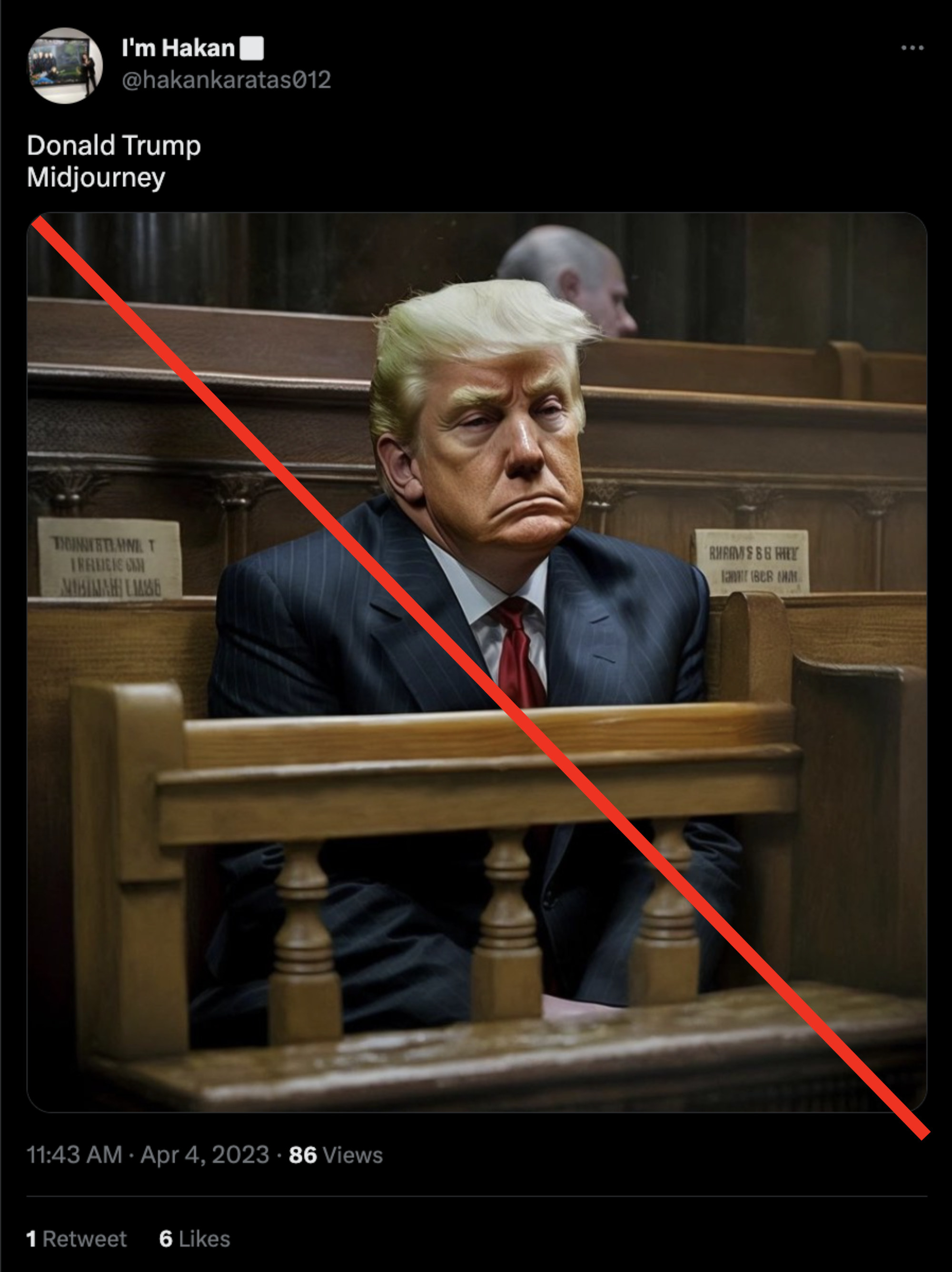Chances are, if you’re online today, you will encounter numerous images of Donald Trump. The former president was arraigned at the Manhattan Criminal Court on Tuesday for his involvement in a hush money payment made to adult film star Stormy Daniels before the 2016 election to stop her from going public with claims about having sex with him in 2006. Trump pleaded not guilty to 34 felony counts.
Just be aware: Some of the images floating around on social media are fake, created by both Trump fans and critics alike using artificial intelligence image-generation tools like Midjourney and DALL-E 2.
Even Eric Trump tweeted out one created with Midjourney. (BuzzFeed News added a red stroke through all AI-generated images below to prevent them from being shared as real images.)

And here are some of the others currently going around:





Neither Midjourney nor OpenAI, the latter of which makes DALL-E 2, responded to requests for comment from BuzzFeed News.
The rise of AI image generators has made it easy for anyone to create misinformation, especially around major news events involving polarizing politicians like Trump. Last month, images of Trump being detained by police went viral. Not long after that, a great number of people thought that a viral picture of the Pope wearing a puffy white jacket was real. All these images were created with Midjourney, which, after the incidents, disabled free trials and banned the word “arrested” from being used to generate images on its platform.

“It has become increasingly challenging for the average human eye to distinguish between AI-generated and real photos,” said Andrey Doronichev, CEO and cofounder of Optic.xyz, a website that lets people upload images to detect whether they have been generated with AI or not. “This has the potential to manipulate public opinion, undermine the credibility of news sources, and ultimately threaten the democratic process by promoting disinformation.”
Optic is one among many such tools that have sprung up over the last few months in response to the rise of AI-generated images on the internet. None of these tools, including Optic, however, are foolproof. You can also try to recognize if an image is AI-generated by looking for weird fingers or botched faces. Finally, if the image looks too good to be true, it probably is.
Images generated using AI also go against manipulated media policies of platforms like Twitter, but experts said that the platforms do not enforce these policies consistently.
“As there has been a recent rise of AI-generated media, it has become clear that platforms are unprepared for this moment in which fake images and misinformation could lead to real-world harm,” Kayla Gogarty, deputy research director of Media Matters for America, a nonprofit media watchdog, told BuzzFeed News. “Particularly concerning is Twitter, as Elon Musk has abandoned much of the platform’s content moderation and it has become difficult to determine account credibility under the new checkmark policy.”
So please do run any Trump images you see on social media today through one of the AI-detection tools. Or just get your news from a legit news source.
